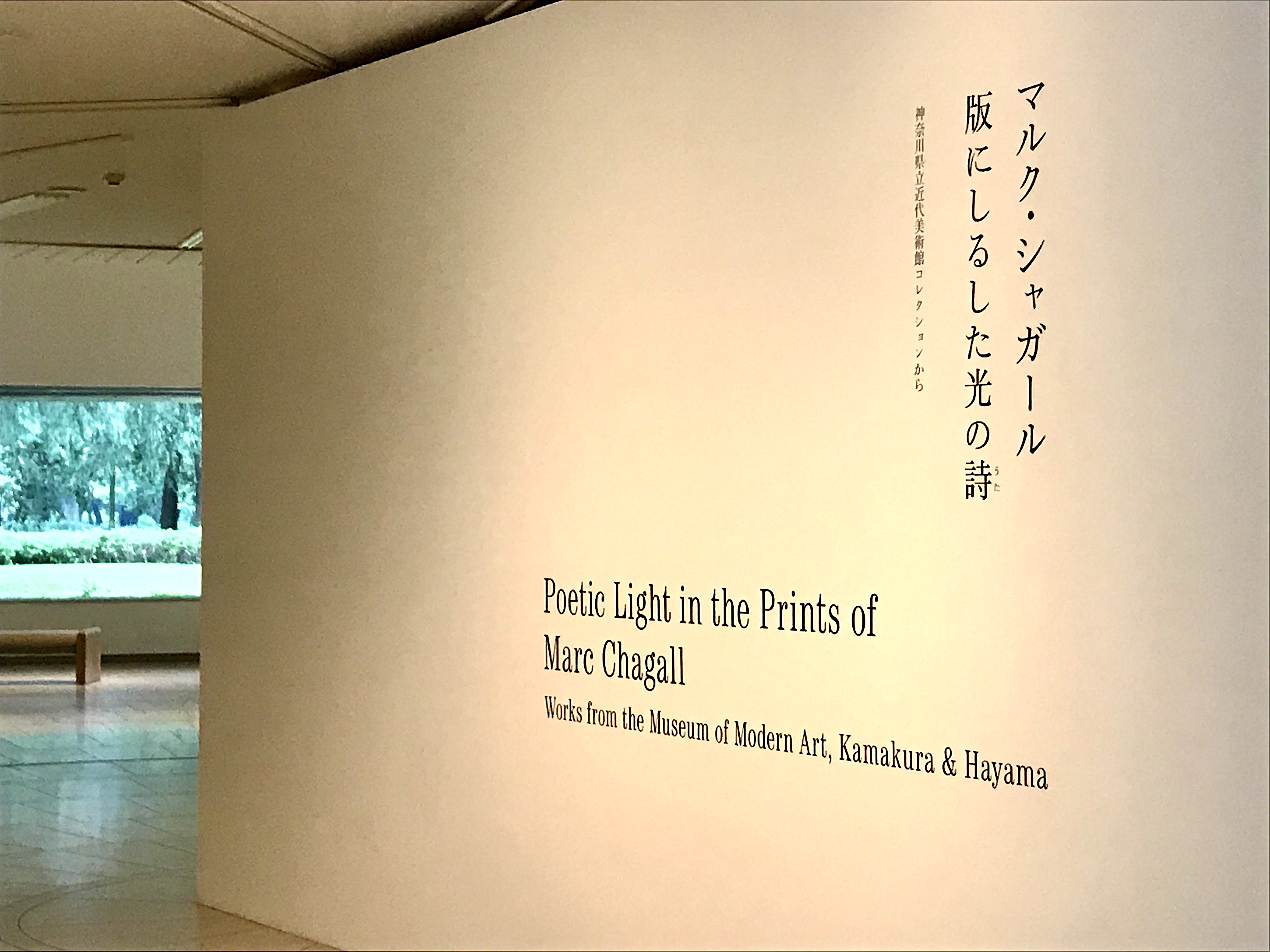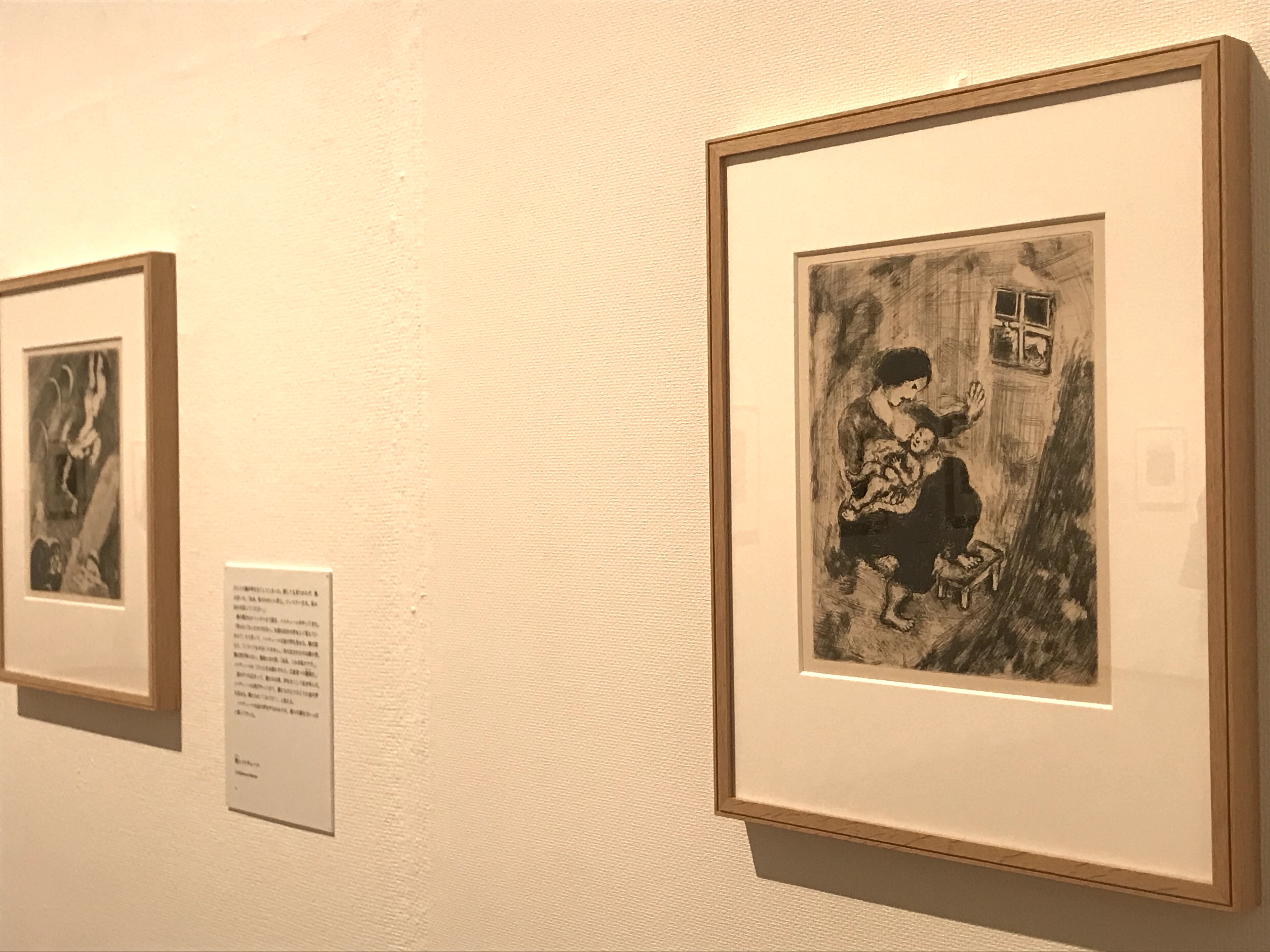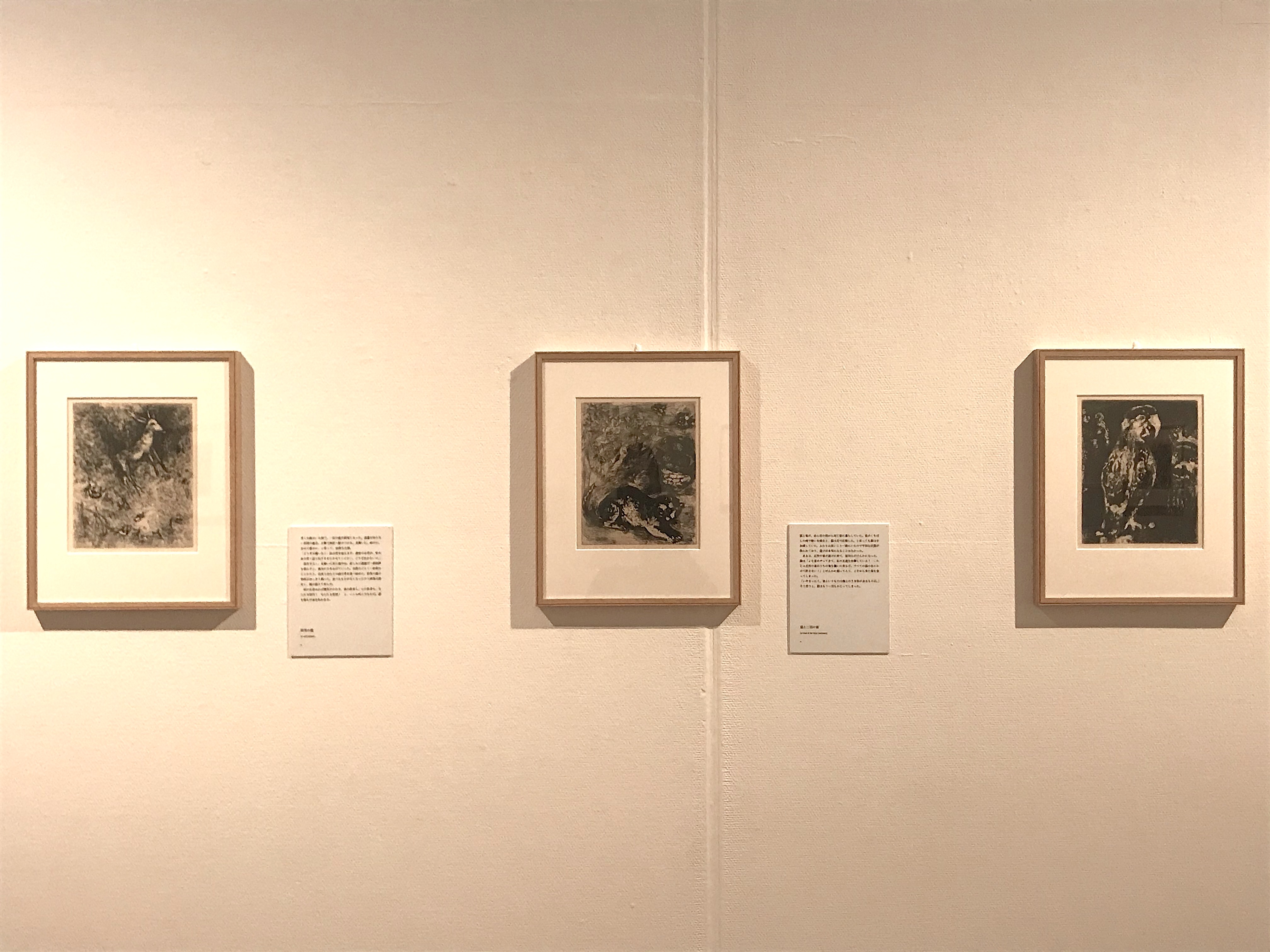POETIC LIGHT IN THE PRINTS OF MARC CHAGALL
HAPPENINGText: Alma Reyes
Painter of love and poetry, Marc Chagall (1887-1985) was one of the most beloved and important figurative artists of the European modernism era. While largely adored for his colorful and dreamlike paintings, Chagall also produced numerous wonderful prints, encompassing over 1,000 lithographs and 500 etchings, which he embarked on at the later stage of his life. Setagaya Art Museum is presenting 140 of these masterpieces carefully selected from the Mochizuki collection of Museum of Modern Art, Kamakura & Hayama, in “Poetic Light in the Prints of Marc Chagall: Works from the Museum of Modern Art, Kamakura & Hayama” until August 27th. They outline six print collections of monochrome and color lithographs, copper-engraved etchings, and woodcuts, published in the 1950s and 1960s.

Exhibition entrance
The showcase opens to 32 of Chagall’s 100 black and white etchings from “Les Fables de la Fontaine” (The Fables of La Fontaine), 1952. The fables written from 1668 to 1694 by 17th century French poet Jean de la Fontaine are widely famed for their humor and satirical content about animals and humans, which are still taught in schools today. In 1927, French art dealer Ambroise Vollard commissioned Chagall to work on the series of etchings illustrating the fables. During this time, Chagall endured much public criticism as a Jewish Russian and his ability to interpret French national literature. However, Vollard was taken by Chagall’s sense of contradictory aesthetics and coexistence of realism and fantasy. Chagall, likewise, was allured to the fables’ grand themes of life — love, death, human err, and Biblical anecdotes. Scrutinizing closely at the illustrations, we find Chagall’s adept use of the etching needle for engraving lines and dots, that were later applied with varnish to achieve a highlighted effect and rich gradation on the foliage, bushes, and animal feather and fur patterns. The shadings and cross-hatched textures evoke a range of tonalities transcending from white to black.

Marc Chagall, Les Fables de la Fontaine, Le Bucheron et Mercure, 1952 (left); Loup, la mère et l’enfant, 1952 (right)
One illustration exemplifying such a deep tone contrast of black and white is “Loup, la mère et l’enfant” (The Wolf, the Mother, and the Child), 1952. We can feel fear toward the wolf waiting in front of the villager’s house through the rugged shading. The mother figure, etched in profound black, comes to focus as she calms her crying child. Textural techniques on animals can also be seen in “Le cerf malade” (The sick deer), 1952; “Le chat et les deux moineaux” (The cat and the two sparrows), 1952 and “Les deux perroquets, le roi et son fils” (The two parrots, the King, and his son), 1927-30.

Marc Chagall, Les Fables de la Fontaine, Le cerf malade, 1952 (left); Le chat et les deux moineaux, 1952 (center); Les deux perroquets, le roi et son fils, 1927-30 (right)
The next print collection, “Journal d’un Cheval” (Diary of a Horse), 1952, derives from the story by Jewish German-French writer Claire Goll. Goll was the wife of Yvan Goll, a left-wing journalist and antiwar activist who, together with Claire, shared common political interests with Chagall. Chagall’s background, growing up as a Jew in communist Russia, was tainted by dark experiences of the ravages of war, which compelled him to fly to and from his hometown Vitebsk, and Paris, Berlin and New York. He was sympathetic to the war and carved his identity onto his drawings reflecting Russian folk art, Orthodox church icons, as well as Jewish traditions. “Journal d’un Cheval” tells of an anthropomorphized Paris cab-horse caught in harsh trials arising from the cruelties and follies of human society. Such fragile conditions are manifested through Chagall’s delicate lines and spectacular shades of color.
Read more ...





